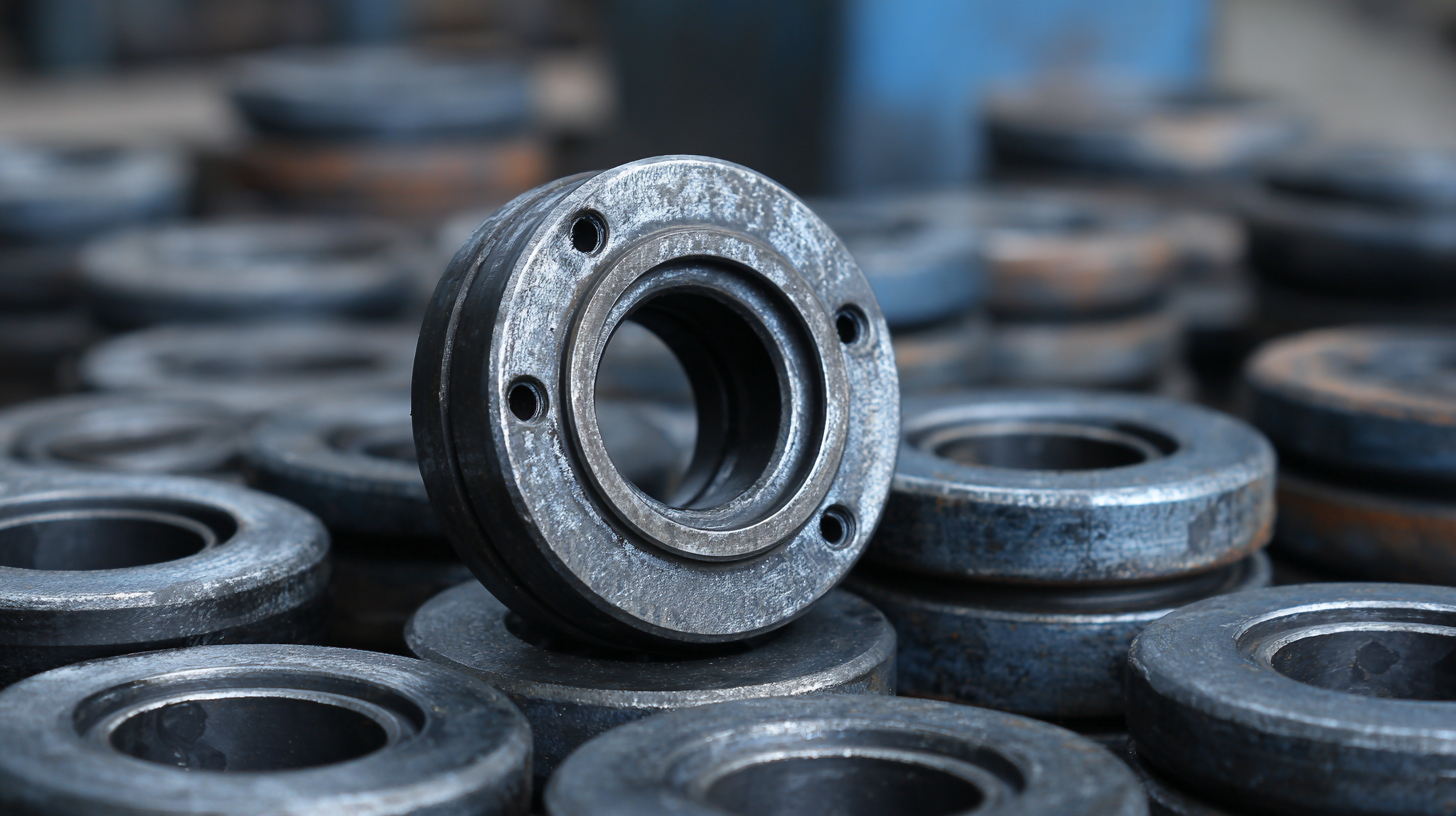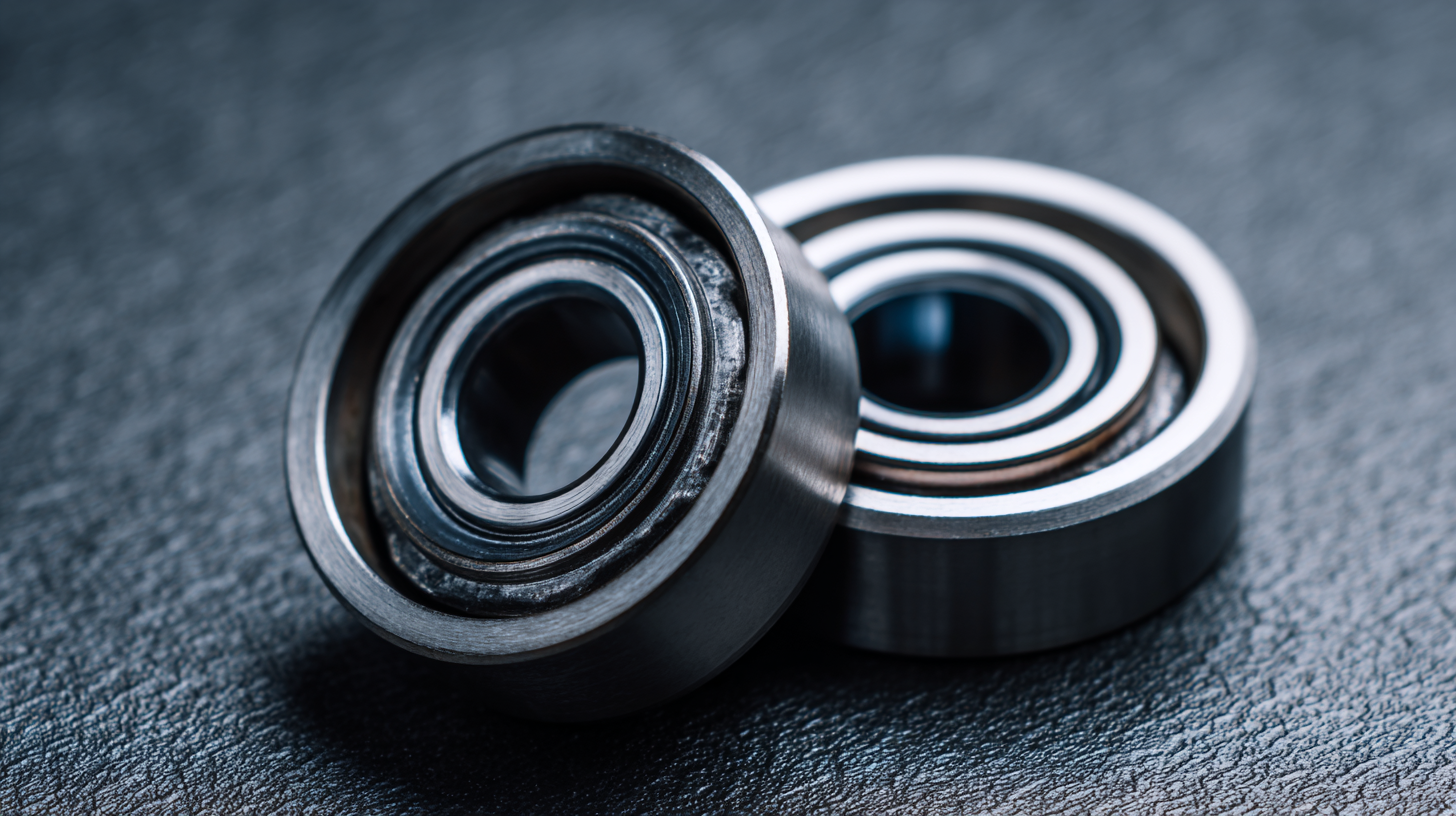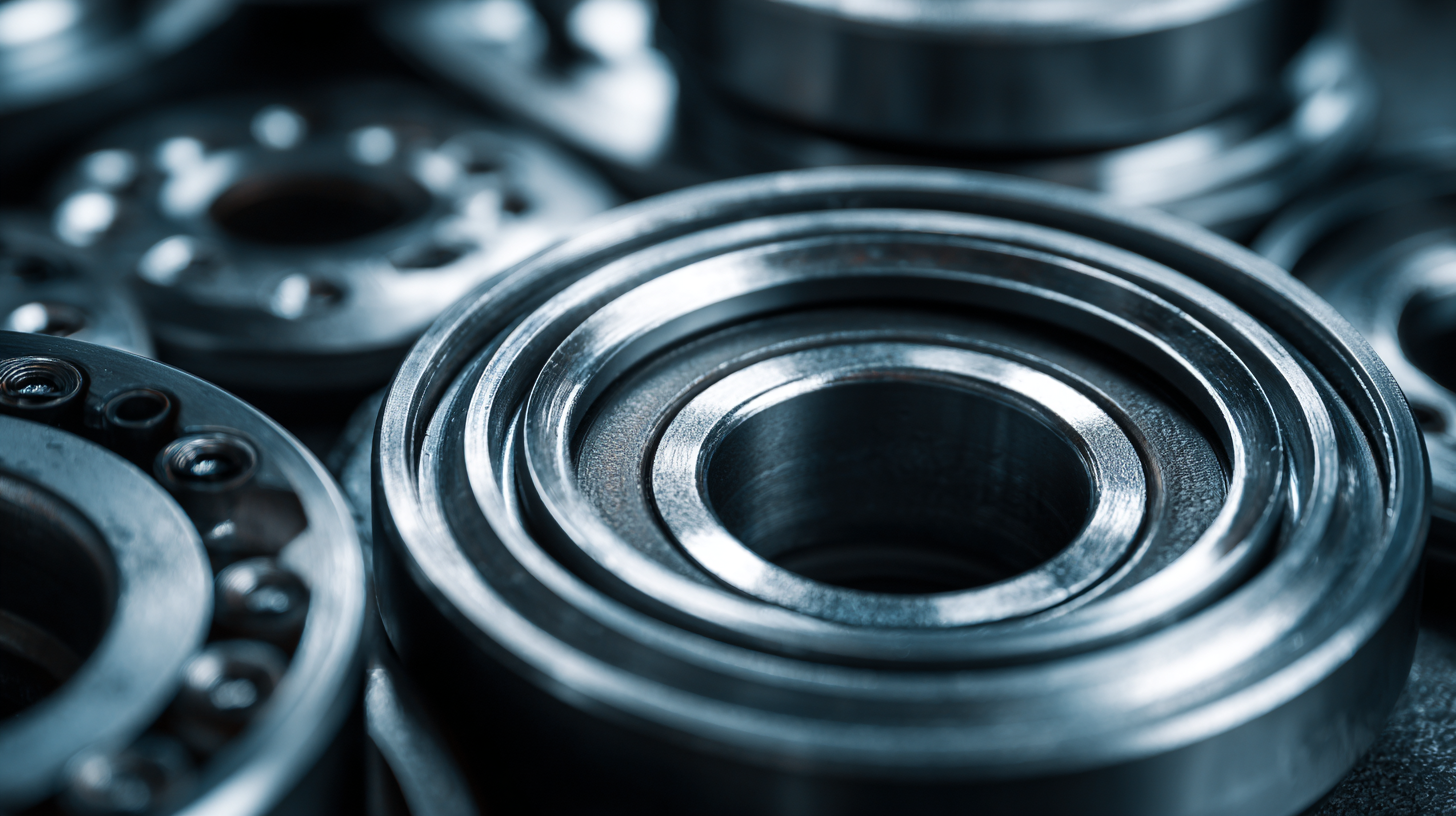Exploring the Future of Best Flanged Thrust Bearings in 2025 and Their Top Alternatives
As we approach 2025, the demand for flanged thrust bearings is projected to expand significantly, driven by advancements in various industrial applications such as automotive, aerospace, and heavy machinery. According to a report by Markets and Markets, the global bearing market is expected to reach $164 billion by 2025, with thrust bearings comprising a substantial segment due to their pivotal role in supporting axial loads in rotating equipment.
 The flanged thrust bearing variant, in particular, is gaining traction thanks to its enhanced stability and ease of installation, making it a preferred choice for engineers and manufacturers alike. This blog explores the future landscape of flanged thrust bearings and highlights compelling reasons for their continued relevance, while also considering top alternatives that might reshape industry standards in the coming years.
The flanged thrust bearing variant, in particular, is gaining traction thanks to its enhanced stability and ease of installation, making it a preferred choice for engineers and manufacturers alike. This blog explores the future landscape of flanged thrust bearings and highlights compelling reasons for their continued relevance, while also considering top alternatives that might reshape industry standards in the coming years.
Advantages of After-Sales Service for Flanged Thrust Bearings
In the rapidly evolving landscape of mechanical components, flanged thrust bearings have gained prominence due to their ability to support axial loads in various applications. As the industry progresses towards 2025, the significance of after-sales service in enhancing the performance and longevity of these bearings cannot be overstated. According to a report by MarketsandMarkets, the global market for bearing after-sales services is projected to reach USD 10 billion by 2026, highlighting the increasing recognition of these services' value in maintaining operational efficiency.
One of the primary advantages of robust after-sales service for flanged thrust bearings lies in proactive maintenance. Regular inspections and timely replacements can prevent costly downtimes and extend the lifespan of these critical components. A study published by the International Journal of Advanced Manufacturing Technology found that implementing structured after-sales programs can reduce failure rates by up to 30%, contributing to improved overall system reliability. Moreover, skilled support staff can provide tailored maintenance solutions, ensuring optimal performance in unique operating conditions.
Furthermore, after-sales service can foster customer loyalty and trust. By offering comprehensive support, manufacturers can differentiate themselves in a competitive market, potentially boosting repeat business. With the forecasted growth of the flanged thrust bearing market, expected to reach USD 5.5 billion by 2025 (according to Fortune Business Insights), effective after-sales strategies will be essential for businesses aiming to thrive in this burgeoning sector.

Cost Analysis of Maintenance for Thrust Bearings in 2025
As we approach 2025, the cost analysis of maintenance for thrust bearings becomes increasingly crucial for manufacturers and engineers alike. With the U.S. ball bearing market projected to grow substantially, reaching approximately USD 11.1 billion by 2032 at a CAGR of 4.4% from 2025 to 2032, understanding maintenance costs is essential for optimizing budgets and ensuring operational efficiency.
Regular maintenance is key to prolonging the lifespan of thrust bearings and minimizing total operating costs. One important tip is to implement a predictive maintenance strategy that utilizes data analytics and sensor technology. This approach can detect potential failures before they escalate, allowing for timely interventions and reducing unplanned downtime.
Another tip for managing maintenance expenses involves selecting the appropriate bearing type for specific applications. Thrust bearings come in various designs, each suited for different operational demands. Conducting a thorough application analysis will help ensure the right choice, potentially lowering maintenance needs and associated costs in the long run. Emphasizing quality and compatibility during the procurement of bearings can result in significant savings and improved performance.
Exploring the Future of Best Flanged Thrust Bearings in 2025
This chart illustrates the projected maintenance costs of various types of thrust bearings in 2025, highlighting alternatives to traditional flanged thrust bearings.
Comparative Study of Top Flanged Thrust Bearing Alternatives
As the demand for efficient rotational support systems increases, the exploration of flanged thrust bearings has become critical. The market for thrust bearings is projected to grow at a CAGR of 4.5% between 2020 and 2025, according to a report by MarketsandMarkets. Flanged thrust bearings, with their unique design and enhanced load-carrying capabilities, offer substantial advantages over standard thrust bearings. They are widely utilized in applications ranging from automotive to aerospace, where stability and high performance are essential.
When considering alternatives to traditional flanged thrust bearings, polymer and composite bearings emerge as strong contenders. A study published by TechSci Research indicates that composite bearings can reduce weight by up to 30%, while providing comparable performance metrics. Additionally, advancements in materials technology, particularly with the introduction of self-lubricating composites, enable these bearings to operate efficiently under harsh conditions. Furthermore, magnetic bearing technology is making headway in sectors where precision and minimal friction are paramount, potentially reshaping the bearing landscape in the coming years. As companies evaluate these alternatives, their unique characteristics will play a significant role in steering industry trends toward innovative solutions.
Exploring the Future of Best Flanged Thrust Bearings in 2025 and Their Top Alternatives
| Type |
Load Capacity (kN) |
Material |
Operating Temperature (°C) |
Lifespan (Hours) |
Cost per Unit ($) |
| Flanged Thrust Bearing A |
30 |
Steel |
-20 to 120 |
50000 |
200 |
| Flanged Thrust Bearing B |
35 |
Bronze |
-10 to 150 |
55000 |
240 |
| Flanged Thrust Bearing C |
28 |
Plastic |
-30 to 100 |
30000 |
150 |
| Flanged Thrust Bearing D |
40 |
Ceramic |
-40 to 200 |
70000 |
350 |
| Flanged Thrust Bearing E |
32 |
Composite |
-20 to 140 |
40000 |
180 |
Impact of Technological Advancements on Bearing Performance and Costs
The race towards technological advancements in the bearing industry is shaping the future of flanged thrust bearings by 2025. With the global bearing market projecting a remarkable growth trajectory—from $500.1 billion in 2025 to approximately $971 billion by 2032—it's clear that innovation will play a pivotal role in enhancing performance and reducing costs. The integration of smart technologies and predictive maintenance solutions is expected to revolutionize bearing applications across various industries, including renewable energy and high-end machinery manufacturing.

As offshore wind power accelerates its development, driven by improvements in technology and cost efficiencies, the demand for reliable thrust bearings is poised to rise. These bearings are critical for maximizing operational efficiency and minimizing maintenance downtime in renewable energy systems. Companies that invest in research and development, especially in digital and smart bearings, will not only meet the growing market demand but also contribute significantly to sustainability goals. As the sector shifts towards greener practices, the impact of technological enhancements in bearing performance will underscore the broader transition to a more sustainable industrial future.
Future Trends in Customer Support for Bearing Products and Services
In the evolving marketplace of thrust bearings, customer support is becoming as crucial as the products themselves. As we approach 2025, industry reports indicate that 70% of customers prioritize after-sales support when selecting bearing suppliers. This trend emphasizes the need for companies to enhance their service offerings, providing not just products but comprehensive solutions that include maintenance, installation, and prompt assistance. A focus on customer-centric services can significantly boost brand loyalty and drive repeat business in a competitive landscape.
To thrive in this environment, manufacturers must embrace technology. Implementing advanced customer relationship management (CRM) systems and using AI-driven analytics can help businesses tailor their support services to meet specific customer needs. Additionally, providing self-service portals can empower customers to find solutions quickly, reflecting a growing desire for efficiency.
Tip: Ensure timely responses to customer inquiries by training support staff to utilize digital tools effectively, streamlining communication processes. Another effective approach is to frequently solicit customer feedback on support experiences, ensuring that improvements are aligned with user expectations. By prioritizing quality customer service, bearing companies can differentiate themselves in the market.


 The flanged thrust bearing variant, in particular, is gaining traction thanks to its enhanced stability and ease of installation, making it a preferred choice for engineers and manufacturers alike. This blog explores the future landscape of flanged thrust bearings and highlights compelling reasons for their continued relevance, while also considering top alternatives that might reshape industry standards in the coming years.
The flanged thrust bearing variant, in particular, is gaining traction thanks to its enhanced stability and ease of installation, making it a preferred choice for engineers and manufacturers alike. This blog explores the future landscape of flanged thrust bearings and highlights compelling reasons for their continued relevance, while also considering top alternatives that might reshape industry standards in the coming years.



